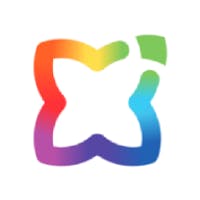What is nature-based learning exactly? Well let us ask you this - when was the last time you drank from a stream? Watched the birds making a mess of the seeds you left for them, for so long that you actually got to know their personalities? When was the last time you read under a tree, stopped and looked up to watch the spellbinding weave of their branches swaying in the breeze under a lazy sky?
Bet you feel calmer already. In the age of Education for Sustainable Development, it is well understood (but somehow not universally practiced) that when children connect with nature it helps them to develop a strong connection with the natural world, with their own sense of self, and with their ability to build an ecocentric perspective in an anthropocentric world that quite frankly isn’t doing so well.
However, research has shown that time spent outdoors can also have significant benefits for children's numeracy and literacy skills (among many others) when we learn through nature as a lens. Using nature as the context and canvas for learning is what we call nature-based learning.
Nature-based learning builds learning alongside wonder
Have you ever looked at a leaf and tried to work out how long it would take a caterpillar to eat it, or counted the trees in an area, and wondered how many lifeforms and habitats they support? Children are born with a natural curiosity about the world around them and they wonder about this stuff all the time.
The true gift of education is to take this spark and say "oh, so that's what you want to know? Well let's see how we can explore that and build learning around it". It is precisely because we have been doing the opposite of that, that children have their natural curiosity dampened and squeezed into rows, boxes, and frameworks. As an adult, don't you miss that sense of wonder? It never left you, you know.
Nature-based learning is a walk in the park
Back to our learners. There are countless opportunities for building numeracy skills on a walk through the forest or a visit to the beach. Even just in an inner city park, learners can work out how far they've walked using only their stride length, to estimating how many seeds are in a flower head.
By using nature as our learning environment, we integrate the core skills they will need to carry out basic functions such as budget expenses or calculating dimensions with the living world, as well as the more technical stuff. It’s all possible.
What's more, by bringing the natural world into the classroom through incorporating nature-based learning, we also improve children's wellbeing. Studies have shown that time spent in nature can reduce stress, anxiety, and ADHD symptoms. So not only are we supporting them in developing important skills for life, we're also giving them time to just be, and connect with the world around them; something that we could all do with a little more of.
And literacy? Where do we even begin? Numeracy helps us explore the structures, dimensions, ratios, angles and prevalence of nature, making us look at it from different angles, and reflect it back into learning. Literacy transforms it.
Nature-based learning reframing our expression of the world
In his book, Being Ecological, Timothy Morton explores nature as an object ontologist in a sparkling display of creative pyrotechnics. He asks if we can ever really "know" an apple? How can we know it, if we have never eaten one, thrown it, been hit by one, watched it grow, transformed ourselves into a worm and buried into the centre of it?
Literacy allows learners to transform themselves and connect with the natural world. Place-based writing is a technique that encourages children to connect with their surroundings and write about what they see, smell, feel, and hear. It allows them to build a connection with the place they are in and understand how they fit into it.
Writing into place not only helps us connect with nature, but also explore our sense of place in community and the language we use to describe our world. The wonderful A-B-Tree project in the Scottish Highlands is a great example of this. Did you know that each letter in the gaelic alphabet is represented by a tree? Check them out for a beautiful example of connecting poetry, expression, identity, language, nature and science into one learning experience.
Learning transversally is easy when nature is the context. Writing a letter to a local councilor to protest at the permission granted to fell a historic tree, is an act of literacy. Discussing the impact of this on local wildlife numbers, and the loss of a habitat for future generations is numeracy. Together they support learners not only to develop skills in the context of respect and love for the living world, but to use these skills to protect it too.
If only we had been doing this kind of thing all along, we may not have gotten to this point, but if the scientists are correct (and we trust that they are), then there is still hope for us. Seeing ourselves as part of nature rather than its overlords is a mindset shift that starts with our children. Building in other crucial core skills to this process is the cherry on the cake.
At the Learnlife Eco Hub we integrate nature and learning from sunrise to sunset, to create a future-focused and community-driven space where lifelong learners can gather to develop core skills that support a sustainable world. Why did we ever think we needed to build these skills in neat rows of silent, passive learners? Numeracy and literacy are simply ways of understanding and interacting with the beautiful complexity of our surroundings, so let's get out there and fall in love with our world.
Nature-based learning is one of the many learning methodologies in the Learnlife learning paradigm. Read more about nature-based learning here.


